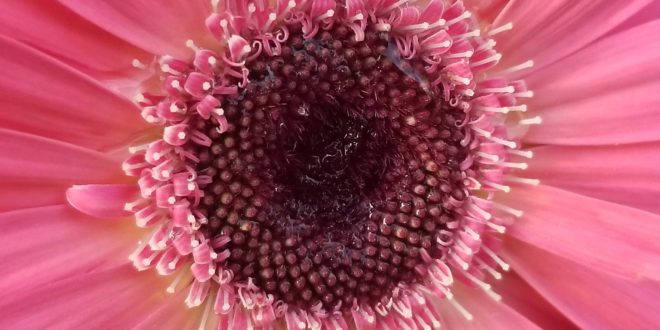New to our Sunnyvale garden in 2020 are Gerbera daisy flowers.
The blooms are large (4 inches across) and have a central disk that can be yellowish, light-bronze, or dark in color. This disk is surrounded by rays that come in a variety of colors. The colors are most commonly yellow, red, or orange. However, growers have also produced varieties (both single-flowered and double-flowered) in a bunch of other colors.
Gerbera daisy flowers typically reach a little over 1 foot in height and width. Flower stems and leaves have a soft feel and appearance. While the foliage is nice, it is for the colors offered by the flowers that gardeners grow this plant.
Gerbera daisy flowers are classified as herbaceous perennials, even though they are treated in cold climates as if they were annuals. They are members of the aster family.
Planting Zones, Sun and Soil Needs
Gerbera daisy flowers are grown as perennials in planting zones 9 to 11. Elsewhere, they are treated as annual plants. In zone 8, some homeowners report success in growing them as perennials, especially if garden mulch is used to furnish them with some protection from the cold in winter. However, be sure not to allow mulch to cover the crown since this plant is susceptible to crown rot.
Grow gerbera daisy flowers in full sun to partial shade. Grow them in a well-drained soil enriched with compost. Their moisture needs are just average once they become settled, but make sure transplants get plenty of water.
Uses in Landscaping
Some gardeners treat them as annuals and take advantage of the bright colors of these tropical plants to accent garden beds populated chiefly by less-expensive annual flowers (gerbera daisy being a rather pricey plant).
A popular use is as holiday plants, to be given as gifts and kept as (short-lived) houseplants. They are also used as cut flowers. Because of the showy colors they come in, they are also great choices to use in containers to dress up your patio or deck.
The Gerbera daisy flowers are not toxic to pets.
Indoor Care
Gerbera daisy flowers will bloom for four to six weeks as houseplants with proper care. Put them in a sunny window. Water them when the soil at the root level is dry, but do not overwater. Avoid overhead watering and watch out for any insect pests that may appear on the plants.
Outdoor Care
Potted plants bought at the florist should be introduced only gradually to direct sunlight outdoors; otherwise, they will wilt. In fact, you should get into the habit of hardening off plants that are being moved around like this, generally speaking. Gardeners growing them as perennials will want to transplant any plants with sunken crowns in spring to ward off crown rot.
If you will be growing the plants from seed, sow the seeds inside about 12 weeks before the final frost date in your area because the plants are slow growers. The peat pots commonly sold at garden centers for starting plants from seed are ideal since gerbera daisies are fussy about being transplanted. Once all risk of frost has passed, you can bring the seedlings outside.
General Care
Water the daisies faithfully to get them started, but, thereafter, beware overwatering. The idea is to have an evenly moist (but not soggy) soil at the level of their roots.
Fertilize regularly with an all-purpose fertilizer for the best blooming display. They are susceptible to crown rot, so do not plant them too deeply. They also have problems with powdery mildew, which is why you need to avoid overhead watering. You should also water the plants early in the day, giving the leaves a chance to dry out as rapidly as possible (before night falls), thereby discouraging fungal invasions.
Checking the leaves once in a while for bugs should be part of a regular care regimen. If you find an infestation, spray with neem oil. Possible pest problems may come from whitefly, aphids, spider mites, and other small bugs.
Deadhead the blooms to promote additional flowering.
Name Origins
The genus name, Gerbera comes from the name of an 18th-century German naturalist, Traugott Gerber.








